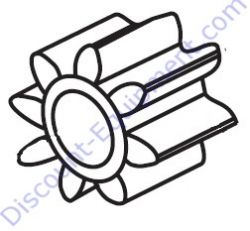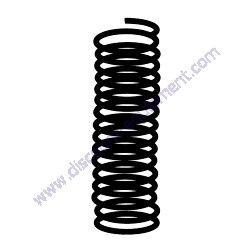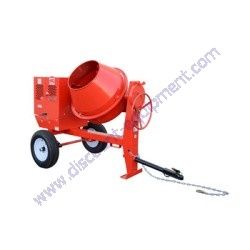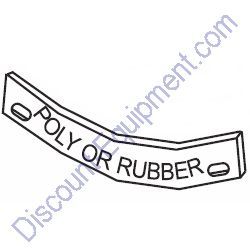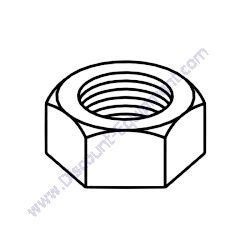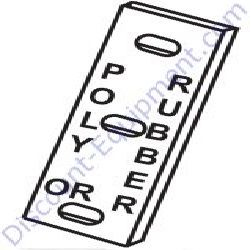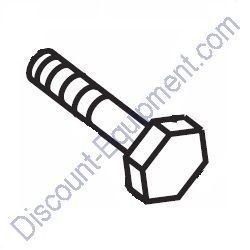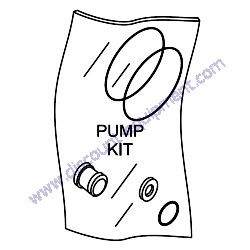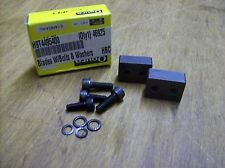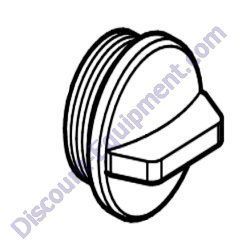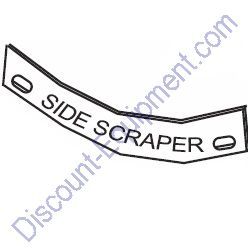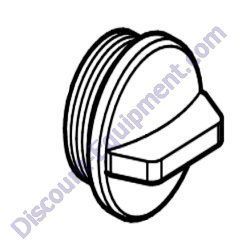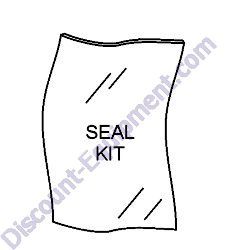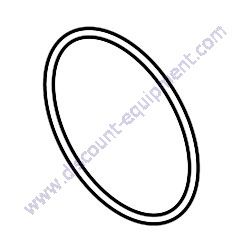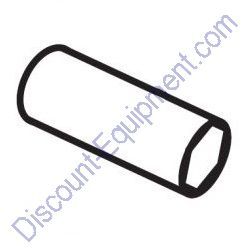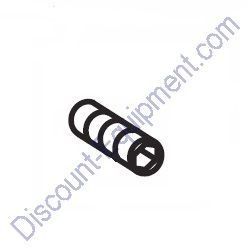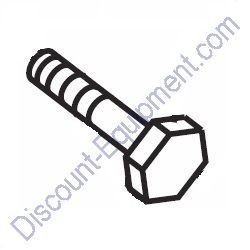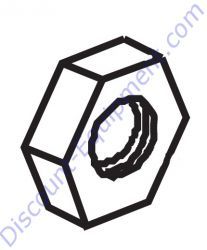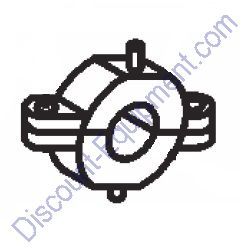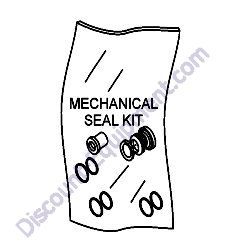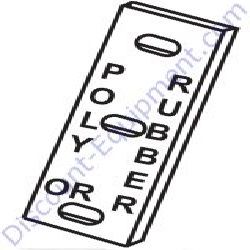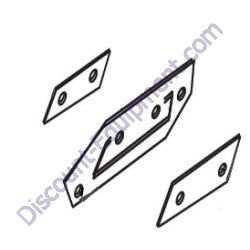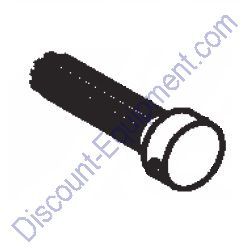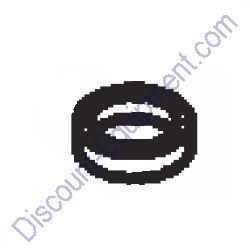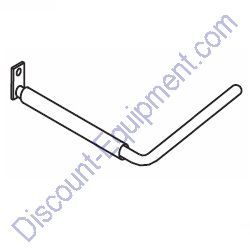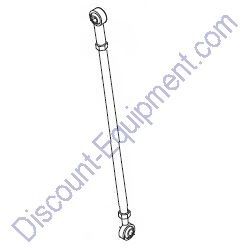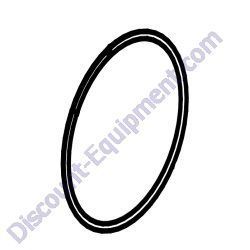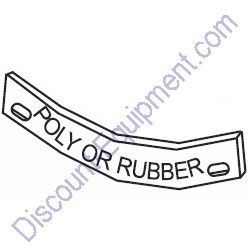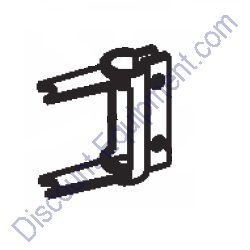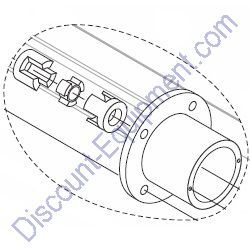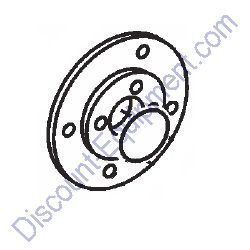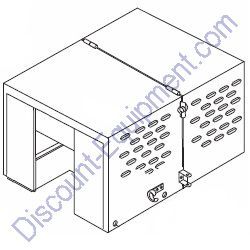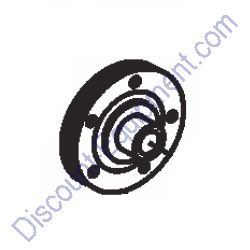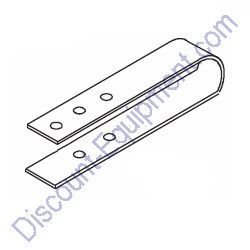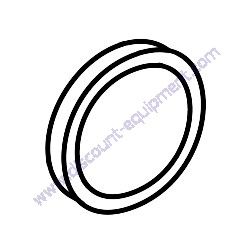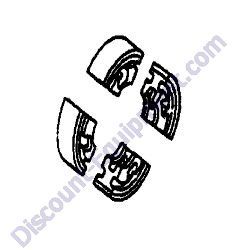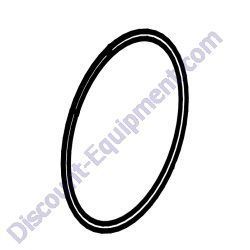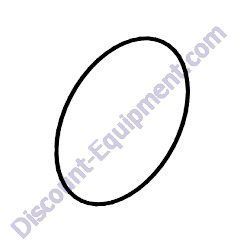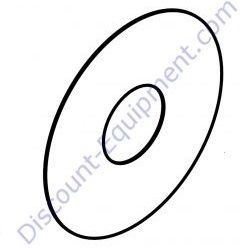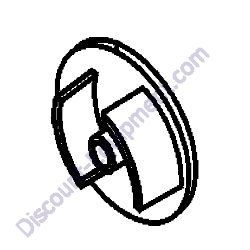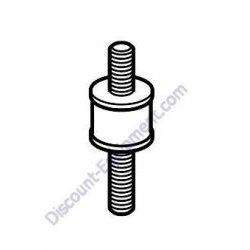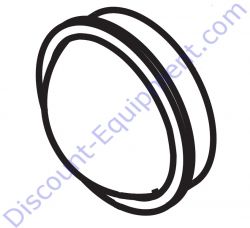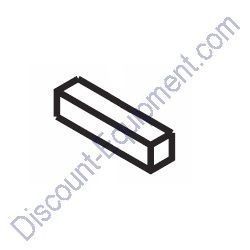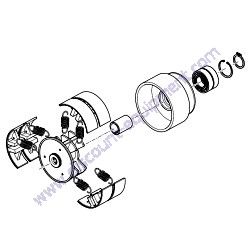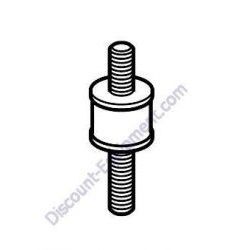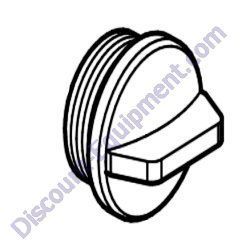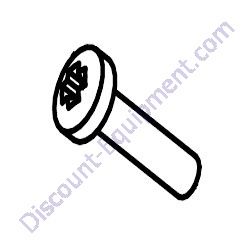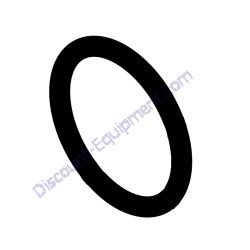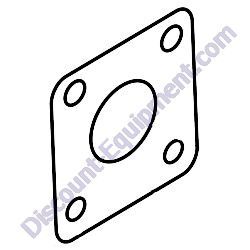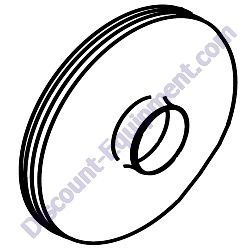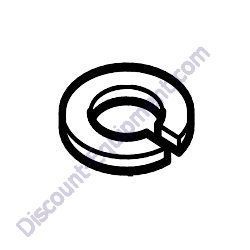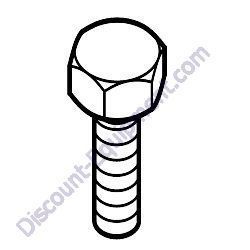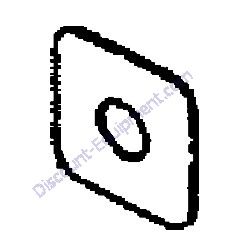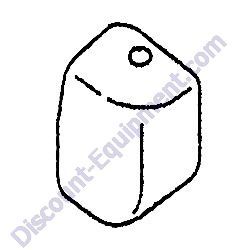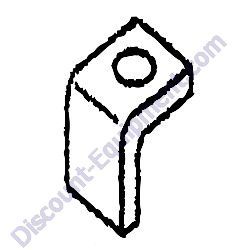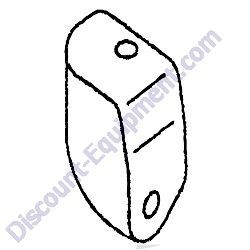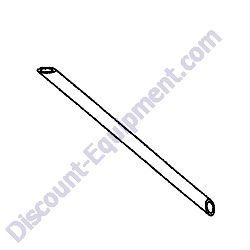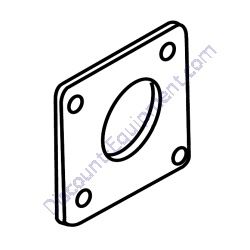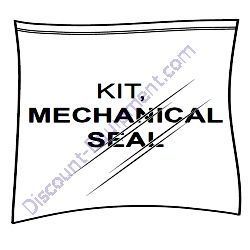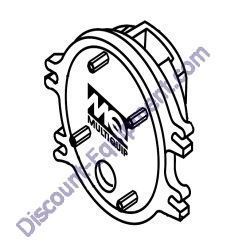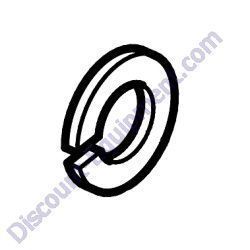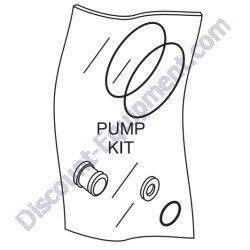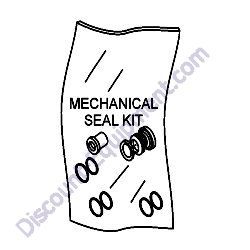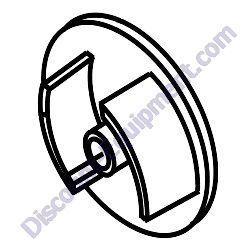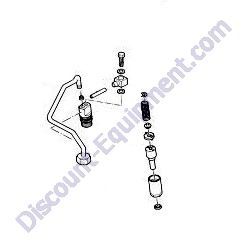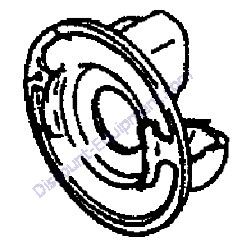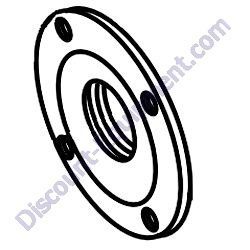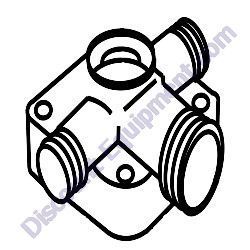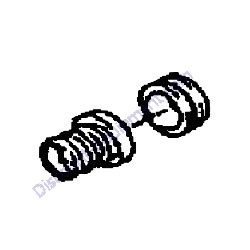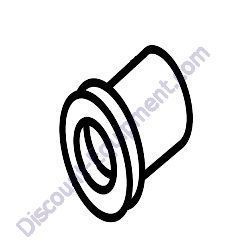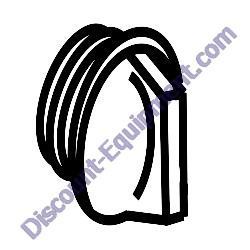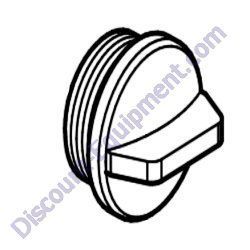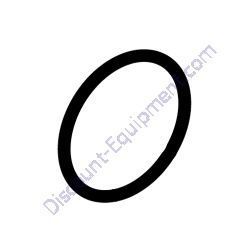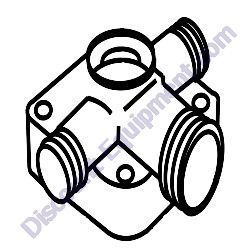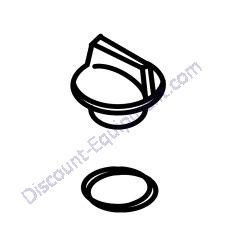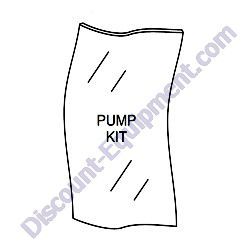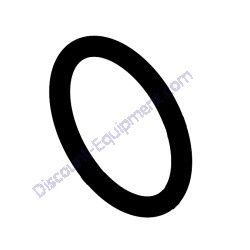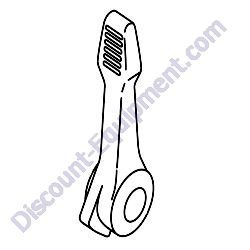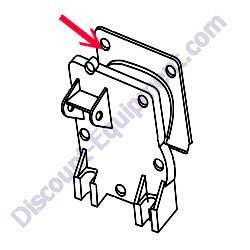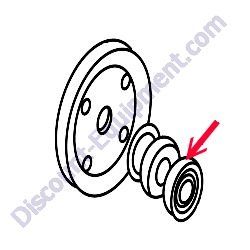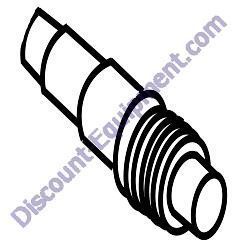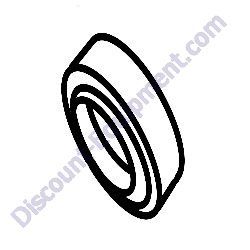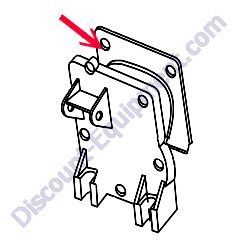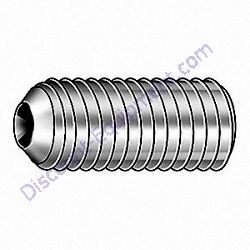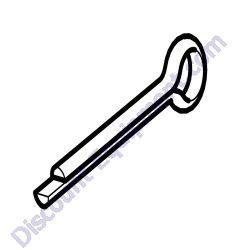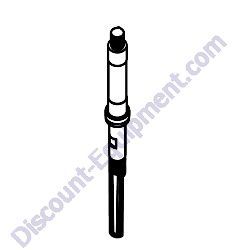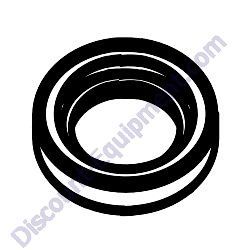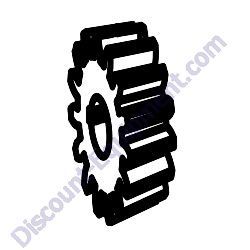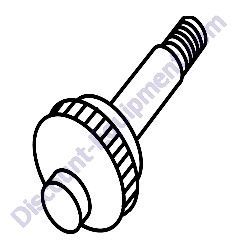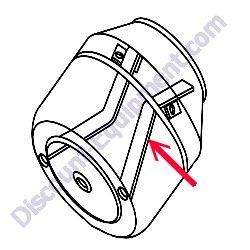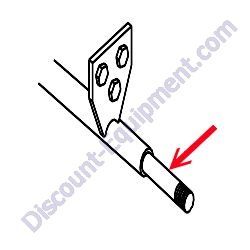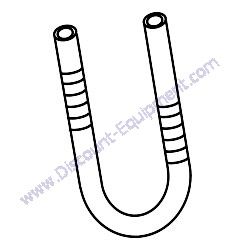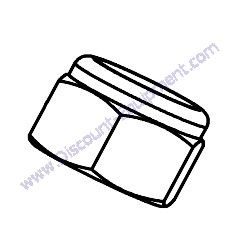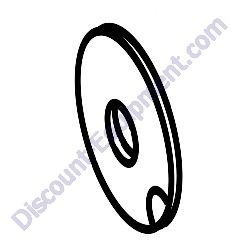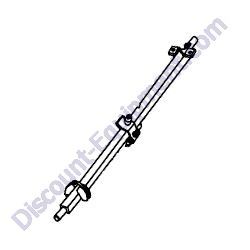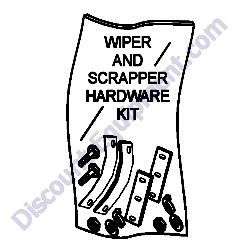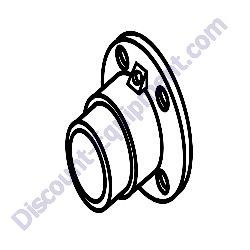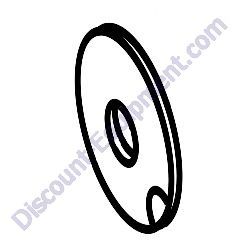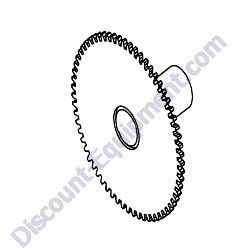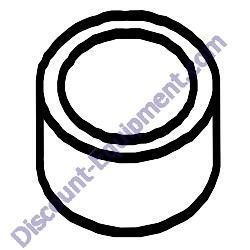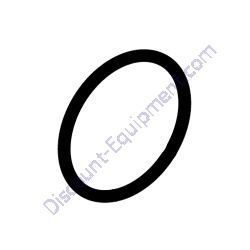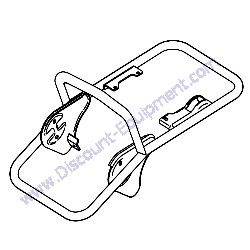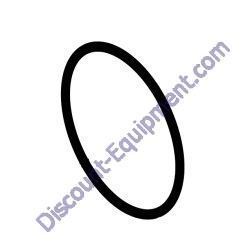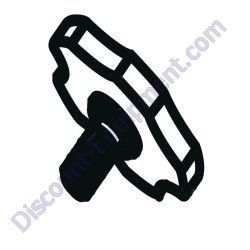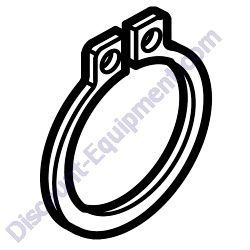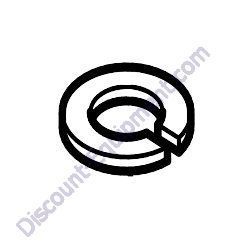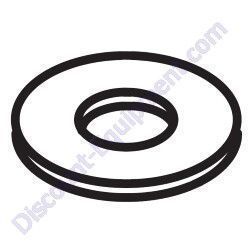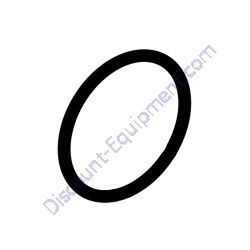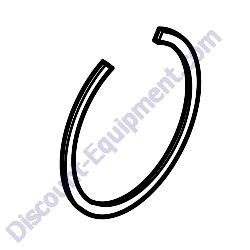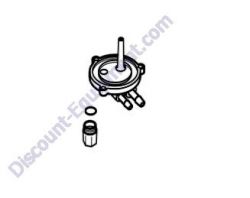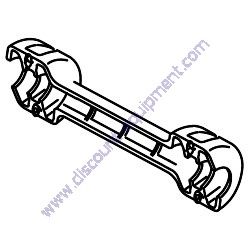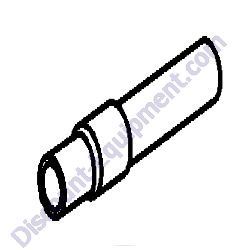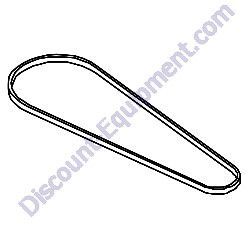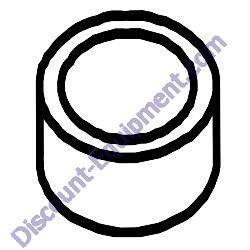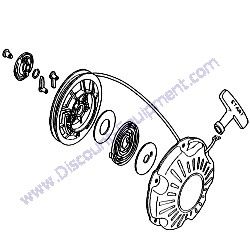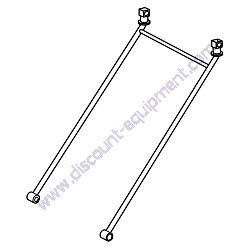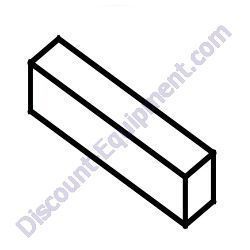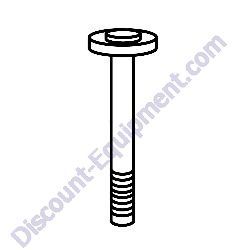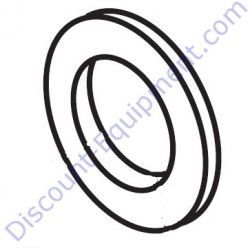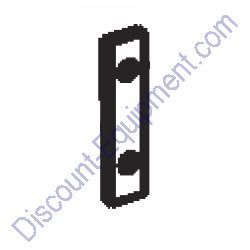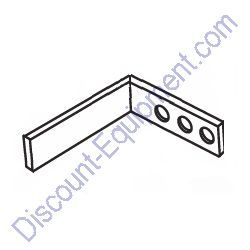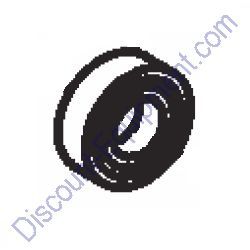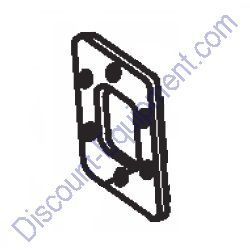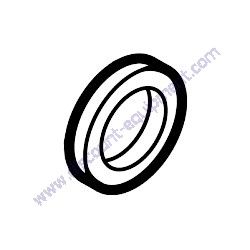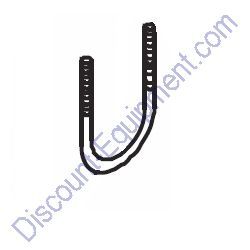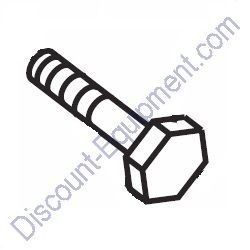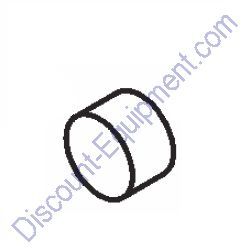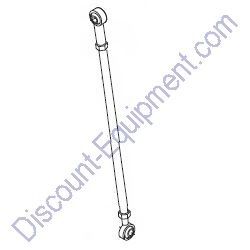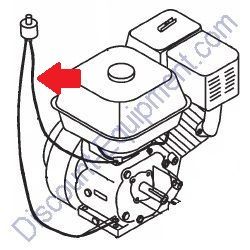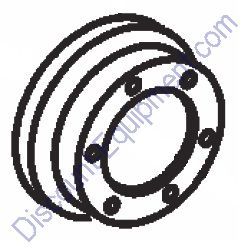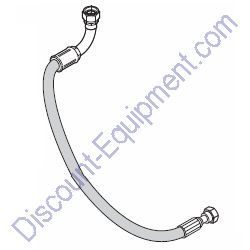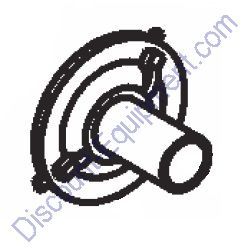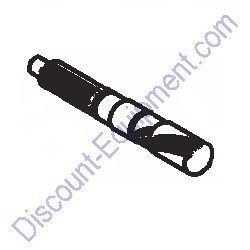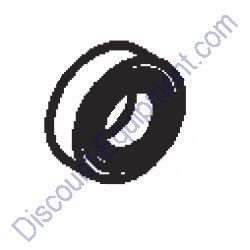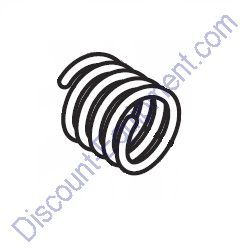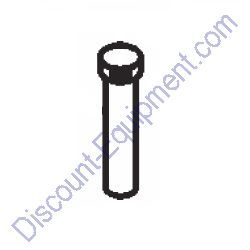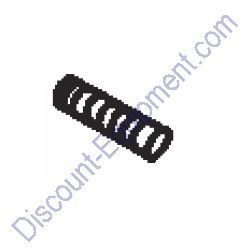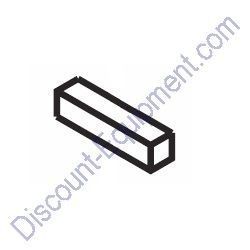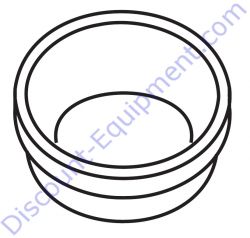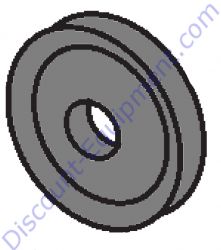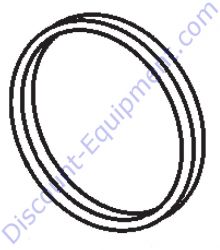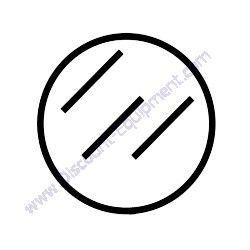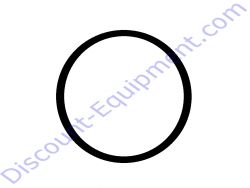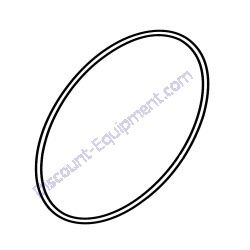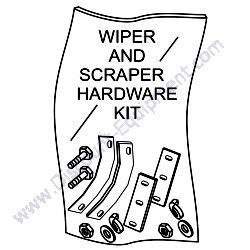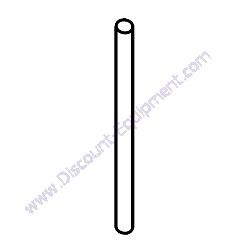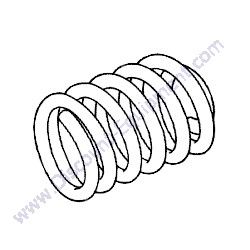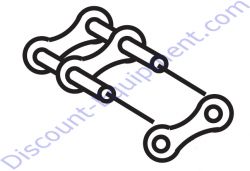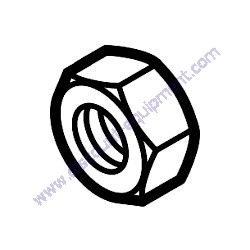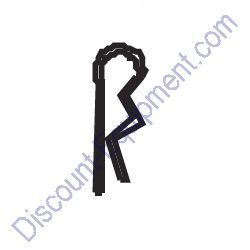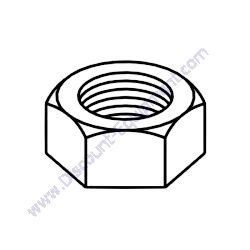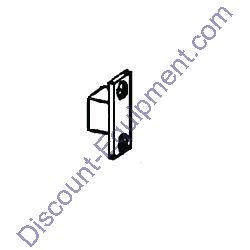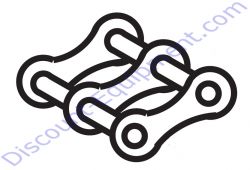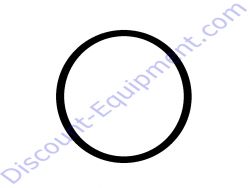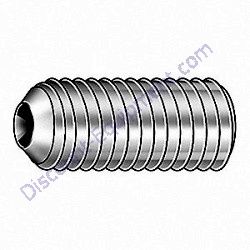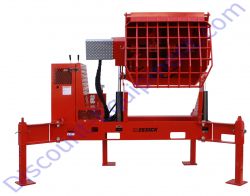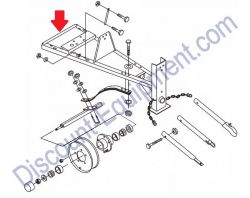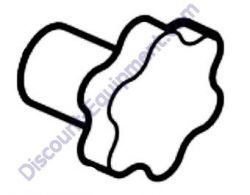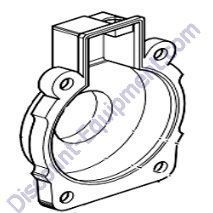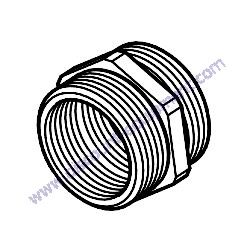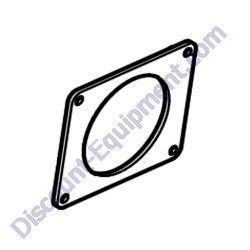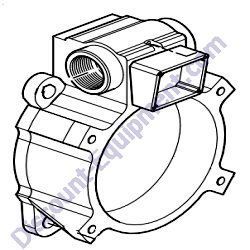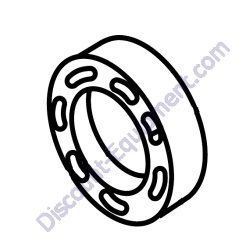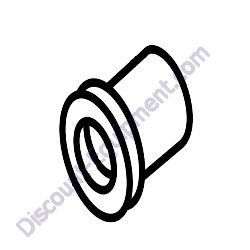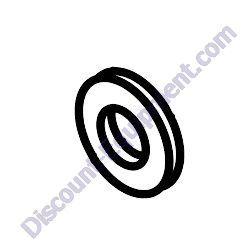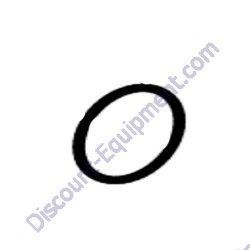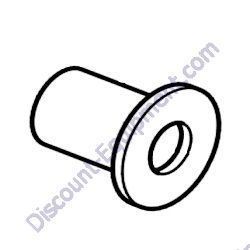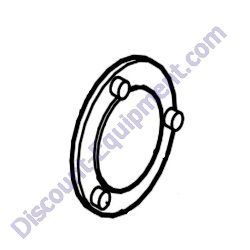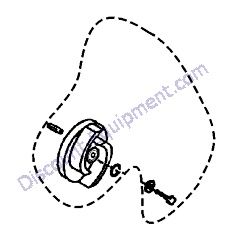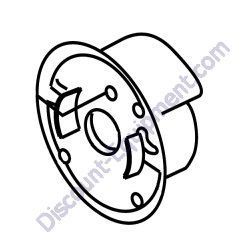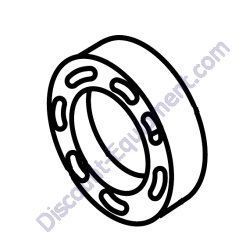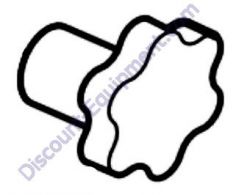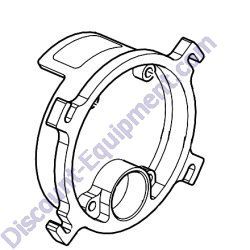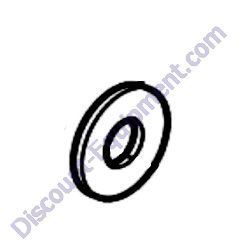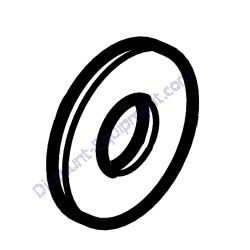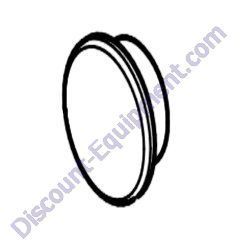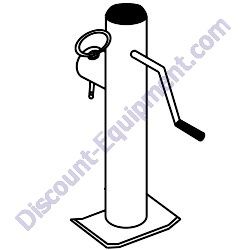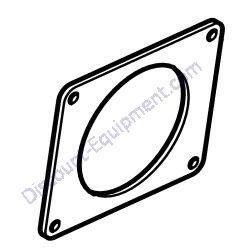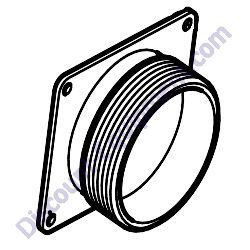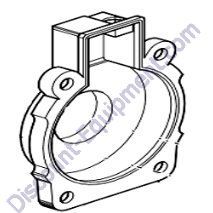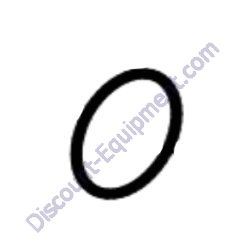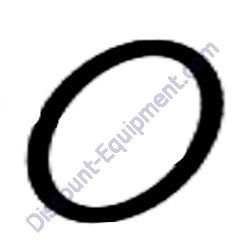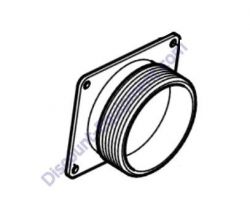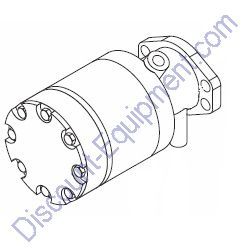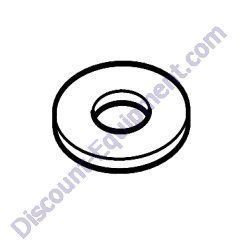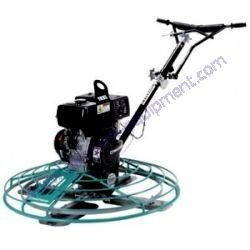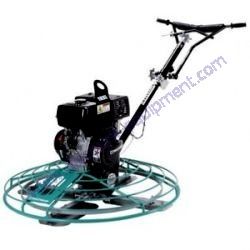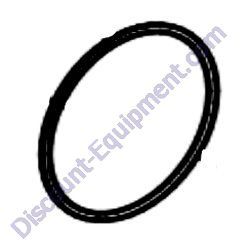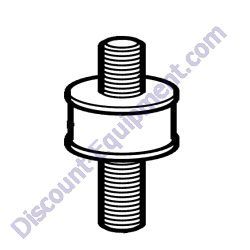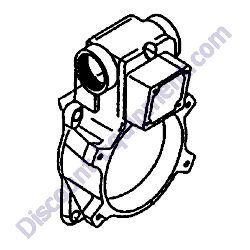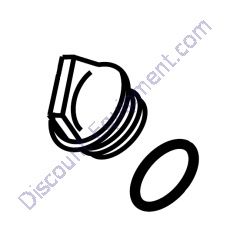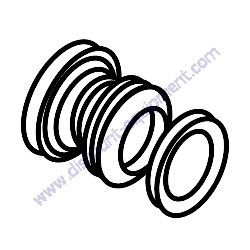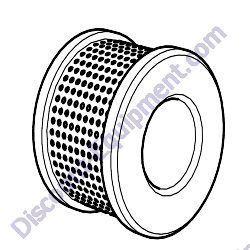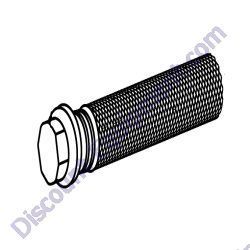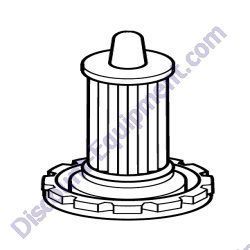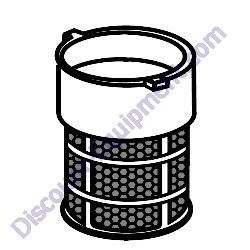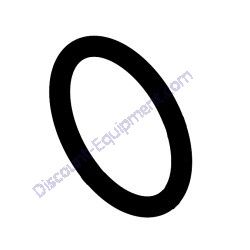Multiquip WSC55BM Barrel-Mounted, Non-cart, Honda GX160
Safety Information
Multiquip Barrel-Mounted
SAFETY INFORMATION
DO NOT operate or service this equipment before reading the entire manual. Safety precautions should be followed at all times while operating this equipment.
Failure to read and understand the safety messages and operating instructions may
result in injury to yourself and others.
SAFETY MESSAGES
The four safety messages shown below will inform you about potential hazards that could injure you or others. The safety messages specifically address the level of exposure to the operator and are preceded by one of four words:
DANGER, WARNING, CAUTION, or NOTICE. SAFETY SYMBOLS
DANGER
Indicates a hazardous situation which, if not avoided, WILL result in DEATH or SERIOUS INJURY.
WARNING
Indicates a hazardous situation which, if not avoided, COULD result in DEATH or SERIOUS INJURY.
CAUTION
Indicates a hazardous situation which, if not avoided, COULD result in MINOR or MODERATE INJURY.
NOTICE
Addresses practices not related to personal injury
Potential hazards associated with the operation of this equipment will be referenced with hazard symbols which may appear throughout this manual in conjunction with safety messages.
GENERAL SAFETY
CAUTION
NEVER operate this equipment without proper protective clothing, shatterproof glasses, respiratory protection, hearing protection, steel-toed boots, and other protective devices required by the job or city and state regulations.
Avoid wearing jewelry or loose-fitting clothes that may snag on the controls or moving parts, as this can cause serious injury.
NEVER operate this equipment while on medication, or when not feeling well due
to fatigue or illness.
NEVER operate this equipment under the influence of drugs or alcohol.
ALWAYS clear the work area of any debris, tools, etc. that would constitute a hazard while the equipment is in operation.
ALWAYS check the equipment for loose threads or bolts before starting.
DO NOT use this equipment for any purpose other than its intended application.
NOTICE
This equipment should only be operated by trained and qualified personnel 18 years of age or older.
Replace nameplate, operation, and safety decals whenever they become difficult to read.
Manufacturer does not assume responsibility for any accident due to equipment modifications. Unauthorized equipment modification will void all warranties.
NEVER use accessories or attachments that are not recommended by Multiquip for this equipment. Damage to the equipment and/or injury to the user may result.
ALWAYS know the location of the nearest fire extinguisher.
ALWAYS know the location of the nearest first aid kit.
ALWAYS know the location of the nearest phone, or keep a phone on the job site. Also, know the phone numbers of the nearest ambulance, doctor, and fi re
department. This information will be invaluable in case of an emergency.
SPRAY CART SAFETY
DANGER
NEVER operate this equipment in an explosive atmosphere or near combustible
materials. An explosion or fi re can result, causing severe bodily harm or even death.
NEVER disconnect any emergency or safety devices. These devices are intended for operator safety. Disconnection of these devices can cause severe injury,
bodily harm, or even death. Disconnection of any of these devices will void all warranties.
NEVER pump or spray flammable or explosive substances.
NEVER use air from the spray cart's air compressor for respiration (breathing).
WARNING
If the spray cart is operated indoors, discharge engine exhaust fumes outdoors.
NEVER spray corrosive chemicals or water containing toxic substances. These fluids can create serious health and environmental hazards.
NEVER engage in horseplay with hoses.
NEVER blow compressed air directly at people.
Scattered dust or foreign debris in the compressed air can cause serious injury.
Blowing compressed air on food is prohibited.
Residual air pressure can cause severe bodily injury.
NEVER use the spray cart to pump or spray water or other liquids for human or animal consumption.
ALWAYS relieve back pressure with the pump pressure regulator before disconnecting the spray gun or hoses.
ALWAYS release all pressure within the system before servicing any components.
ALWAYS drain all fluids from the spray system before servicing
CAUTION
ALWAYS be sure the operator is familiar with proper safety precautions and operating techniques before using the spray cart.
DO NOT lubricate components or attempt service on a running machine.
DO NOT operate the pump above recommended RPM.
DO NOT operate the pump at pressures higher than the maximum recommended pressure for the pump.
DO NOT block or restrict flow from the discharge hose. ALWAYS remove kinks from the discharge line before starting the pump. Operation with a blocked discharge
line can cause water inside the pump to overheat.
Keep personnel away from the discharge opening of hoses, tools or other points of compressed air.
When blowing compressed air to remove dust and debris that has accumulated in such devices as air filters, wear safety glasses, etc. to protect eyes.
DO NOT allow passengers or riders on the spray cart.
ALWAYS engage the parking brake to prevent rolling while parked.
NOTICE
ALWAYS keep the machine in proper running condition.
Select tools, air hoses, pipes, valves, filters, and other fittings accordingly. DO NOT exceed the manufacturer's rated safe operating pressures for these items.
Fix damage to the machine and replace any broken parts immediately.
ALWAYS fill the pump housing with water before starting the engine. Failure to maintain water inside the pump housing will cause severe damage to the pump and
mechanical seal.
In winter, drain water from the pump housing to prevent freezing.
ALWAYS store equipment properly when it is not being used. Equipment should be stored in a clean, dry location out of the reach of children and unauthorized personnel.
ENGINE SAFETY
DANGER
Engine fuel exhaust gases contain poisonous carbon monoxide. This gas is colorless and odorless, and will cause death if inhaled.
The engine of this equipment requires an adequate free flow of cooling air. NEVER operate this equipment in any enclosed or narrow area where free flow of the air is restricted. If the air flow is restricted, it will cause injury
to people and property, and serious damage to the equipment or engine.
WARNING
NEVER place hands or fingers inside the engine compartment while the engine is running.
NEVER operate the engine with heat shields or guards removed.
To prevent injury, keep fingers, hands, hair, and clothing away from all moving parts.
NEVER remove the engine oil drain bolt while the engine is hot. Hot oil will gush out of the oil tank and severely scald any persons in the area of the
spray cart.
CAUTION
DO NOT leave the engine running while the spray cart is unattended. ALWAYS turn off the engine when unattended.
DO NOT touch the hot exhaust manifold, muffler, or cylinder. Allow these parts to cool before servicing the equipment.
DO NOT crank a flooded engine with the spark plug removed. Fuel trapped in the cylinder may squirt out of the spark plug opening.
NOTICE
DO NOT run the engine without an air filter, or with a dirty air filter. Severe engine damage may occur.
Service the air filter frequently to prevent engine malfunction.
DO NOT tamper with the factory settings of the engine or engine governor. Damage to the engine or equipment can result if operating in speed ranges above the maximum allowable.
FUEL SAFETY
DANGER
NEVER start the engine near spilled fuel or combustible fluids. Fuel is extremely flammable and its vapors can cause an explosion if ignited.
ALWAYS refuel in a well-ventilated area, away from sparks and open flames.
ALWAYS use extreme caution when working with flammable liquids.
NEVER fill the fuel tank while the engine is running or hot.
NEVER overfill the fuel tank, since spilled fuel can ignite if it comes into contact with hot engine parts or sparks from the ignition system.
Store fuel in appropriate containers, in well-ventilated areas, away from sparks and flames.
NEVER use fuel as a cleaning agent.
NEVER smoke around or near the equipment. Fire or explosion can result
from fuel vapors.
TRANSPORTING SAFETY
WARNING
NEVER attempt to lift the spray cart with chemicals loaded on the platform. ALWAYS unload the chemical platform before lifting the spray cart. Disconnect and
stow all hoses before lifting.
When lifting the spray cart, make sure the rated lifting capacity of the lifting equipment meets or exceeds the weight of the spray cart. Make sure forklift forks are at least 2/3 the length of the spray cart.
The spray cart is heavy and awkward to move around. NEVER attempt to lift the unit alone. ALWAYS use proper heavy lifting procedures.
BE CAREFUL when lifting the spray cart. A dropped spray cart can cause serious personal injury and damage to the equipment. NEVER lift the spray cart to unnecessary heights. NEVER stand underneath the spray cart while it is being lifted.
NOTICE
DO NOT transport the equipment while the engine is running. ALWAYS shut down the engine before transporting.
Tighten the fuel tank cap securely and close the fuel valve lever while transporting the equipment to prevent fuel from spilling.
ALWAYS tie down equipment securely with rope during transport.
TOWING SAFETY
CAUTION
DO NOT tow the spray cart on public roads. The tow hitch is for on-site towing only.
Recommended off-road towing is not to exceed 15 MPH or less, depending on the type of terrain.
DO NOT tow the spray cart with defective hitches, couplings, chains, etc. ALWAYS inspect the hitch and coupling for wear.
Avoid sudden starts and stops, which can cause skidding or jackknifing. Smooth, gradual starts and stops will improve towing.
Avoid sharp turns to prevent rolling.
Disconnect and stow hoses while towing.
ENVIRONMENTAL SAFETY/DECOMMISSIONING
NOTICE
Decommissioning is a controlled process used to safely retire a piece of equipment that is no longer serviceable.
If the equipment poses an unacceptable and unrepairable safety risk due to wear or damage, or is no longer cost effective to maintain (beyond life-cycle reliability), and is to be decommissioned (demolition and dismantlement),
follow the guidelines below.
NEVER pour waste or oil directly onto the ground, down a drain, or into any water source.
Contact your country's Department of Public Works or the recycling agency in
your area and arrange for proper disposal of any electrical components, waste, or oil associated with this equipment.
When the life cycle of this equipment is over, it is recommended that the frame and all other metal parts be sent to a recycling center.
Metal recycling involves the collection of metal from discarded products and its transformation into raw materials to use in manufacturing a new product.
Recyclers and manufacturers alike promote the process of recycling metal. Using a metal recycling center promotes energy cost savings.
EMISSIONS INFORMATION
NOTICE
The gasoline engine used in this equipment has been designed to reduce harmful levels of carbon monoxide (CO), hydrocarbons (HC) and nitrogen oxides (NOx)
contained in gasoline exhaust emissions.
In the installed configuration, this engine has been certified to meet US EPA evaporative emissions requirements.
Attempting to modify or make adjustments to the engine emission system by unauthorized personnel without proper training could damage the equipment or create an unsafe condition.
Additionally, modifying the fuel system may adversely affect evaporative emissions, resulting in fines or other penalties.
Emission Control Label
The emission control label is an integral part of the emission system and is strictly regulated.
The label must remain with the engine for its entire life.
If a replacement emission label is needed, please contact your authorized engine distributor |

